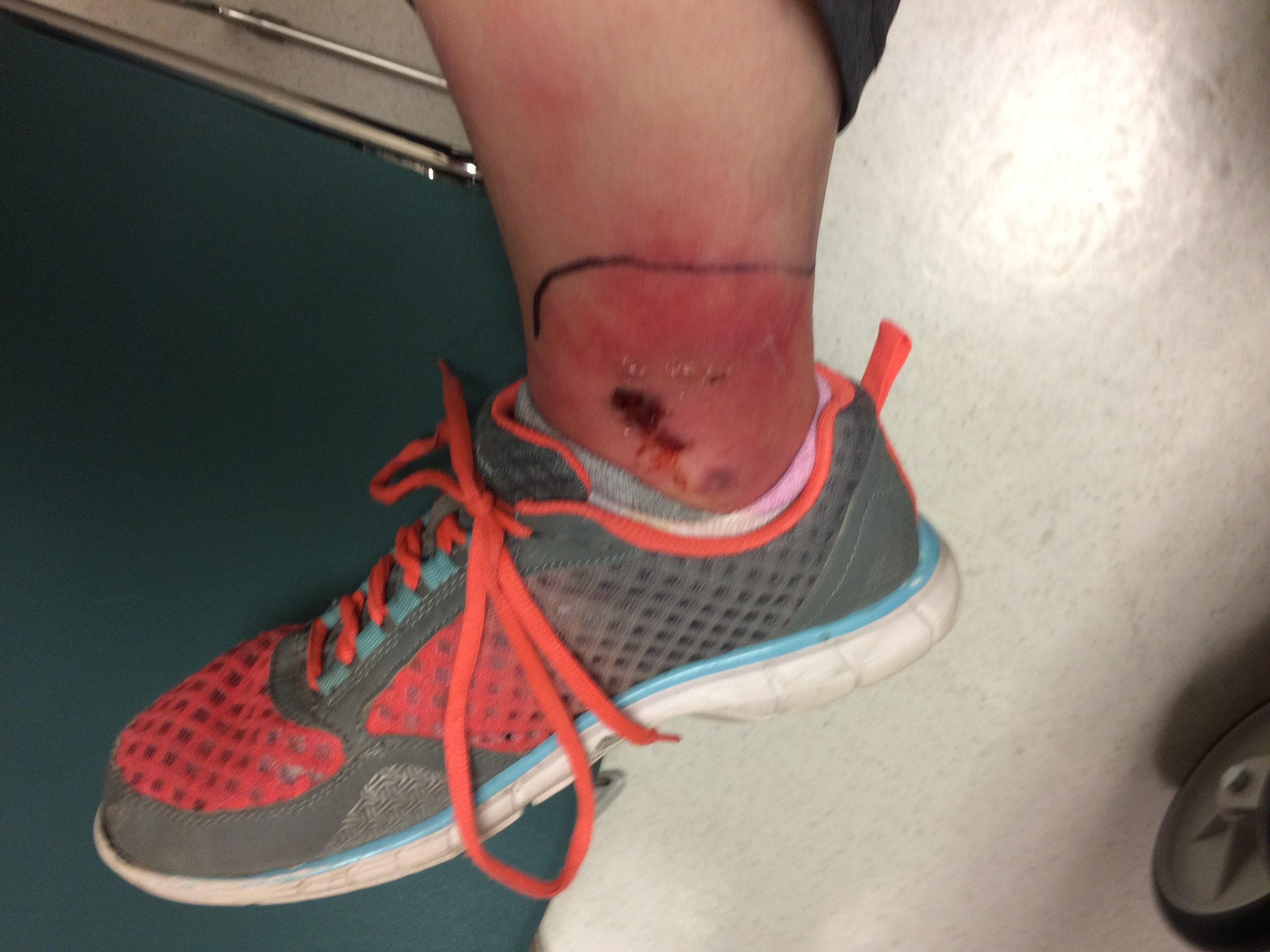By Kim Christensen
I have a 20 year-old daughter with severe autism. Every day is difficult, but I think those occasions when we need to seek emergency medical treatment are a special kind of hell.
Two weeks ago I unknowingly closed the utility room door on her pinky finger. She didn’t make a sound, since high pain tolerance and severe autism often go hand-in-hand. Once I realized what had happened and unlocked the door, her finger was purple & bent awkwardly at an angle.
It took a few minutes before the pain registered but then she started screaming and hitting her head. She put her finger in her mouth, bit down and popped the finger back into place. She was hysterical, screaming and in a lot of pain. We rushed her to the Emergency Room and it took two people to restrain her for X-rays of her hand. Her finger had been dislocated and there was a minor fracture.
She was again restrained so staff could splint her finger & bandage it up. Once the splint was on, she started beating her bandaged hand against her head and trying to remove the splint with her mouth. She bloodied her nose in the process and it was decided to remove the splint before she injured herself any further. The only other option was to cast it all the way up to her elbow. The Physician’s Assistant felt that would be too traumatic, so we opted to let it heal on its own with no support. We gave her over the counter pain meds and once the swelling went down, it didn’t seem to bother her. It isn’t straight and I’m not sure how much range of motion she has now in that finger. The PA said she might develop arthritis in it when she gets older.
A few years ago she developed cellulitis on her ankle, which we later determined was the result of being stung by a bee in our backyard. She doesn’t have the verbal skills to tell us she was stung by a bee and with her high-pain tolerance, I doubt she felt it. She woke up the next day with what I thought was a virus — fever, irritability and difficulty staying awake.
“It took six people to restrain her for the blood draw.”
Fortunately, she was downstairs with me when she fell asleep on the floor. She rolled over on her side and I noticed a large red spot on her ankle. I called my husband and he came home from work to take us to the ER. Staff at the ER insisted on a blood draw before starting any treatment. It took six people to restrain her for the blood draw, and when it was over, she attacked the woman in the bed next to her (but at least that got us into a private room). The standard treatment for cellulitis, which can be life-threatening, is intravenous antibiotics. We explained to the ER staff it would be impossible for her to tolerate an IV treatment without being sedated. ER staff ultimately decided on a shot of antibiotics, followed by a 10-day oral treatment. She recovered, but once again her behaviors interfered with the best course of treatment.
Shortly after the cellulitis incident she had her first seizures. We were at the gym and her aide started screaming at me to come help. My daughter was sitting at a table, her lips were blue and drool was pouring out of her mouth. We put her on the floor and an employee called 911. When the EMTs arrived, they checked her blood pressure, temperature & her blood sugar.
“She tossed us around the parking lot like we were rag dolls, throwing her body against the ambulance and beating on it with her hands.”
She started coming out of the seizure but they recommended she be transported to the hospital since it had never happened before. She walked out of the gym with light physical support, but once she realized we were trying to load her into an ambulance, she fought like her life depended on it. She tossed us around the parking lot like we were rag dolls, throwing her body against the ambulance and beating on it with her hands. The EMTs eventually had me sign a medical release and suggested I transport her to the ER myself. Since she couldn’t undergo an EEG without being sedated, we were released from the ER and told to simply follow-up with a neurologist.
According to Kaiser Health News, the number of people with autism seen in ERs nationally nearly doubled from 81,628 in 2009 to 159,517 in just five years. The number admitted also soared, from 13,903 in 2009 to 26,811 in that time period.
Emergency medical care is not designed to deal with severe autism behaviors. Ripped stitches. IVs torn out. Screams and attacks against staff and patients and property. Emergency care and autism can be a volatile combination. So my question is, what experiences, good and bad, have you had with severe autism and emergency medicine, and what can we do to improve this form of medical care for our children? Their lives may depend on finding these answers.
Kim Christensen is the founder of Pathways to Employment, and lives in Granite Bay, CA.

